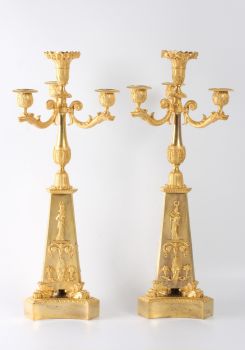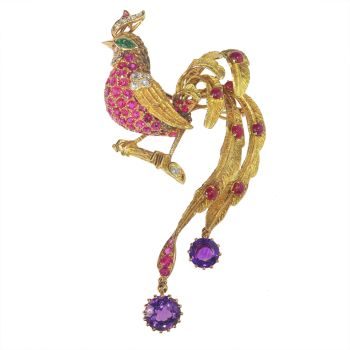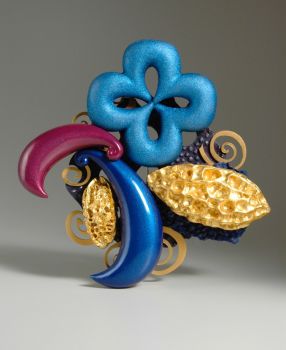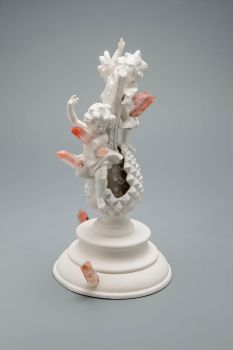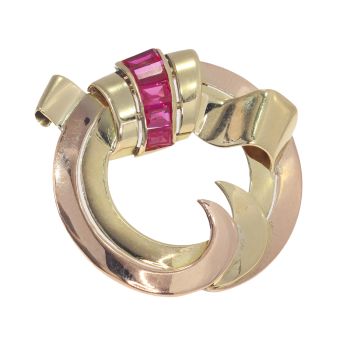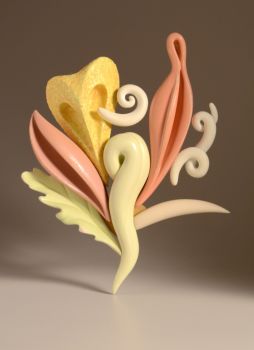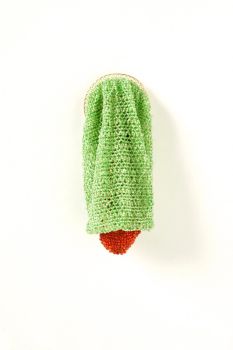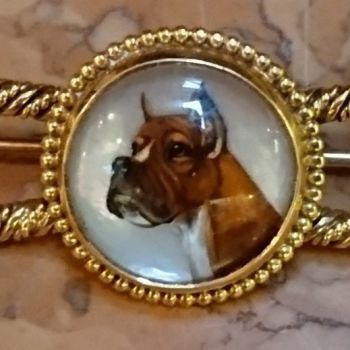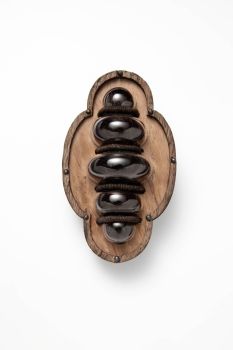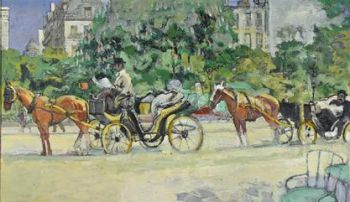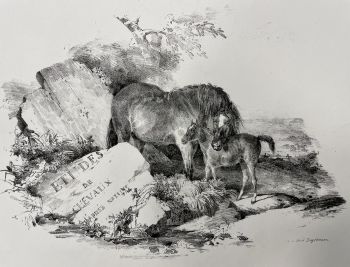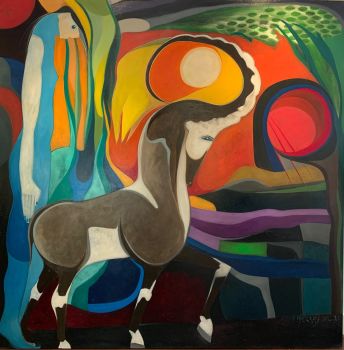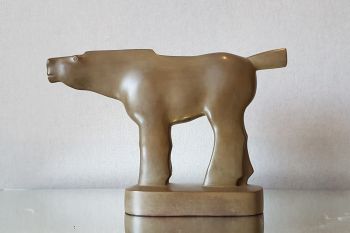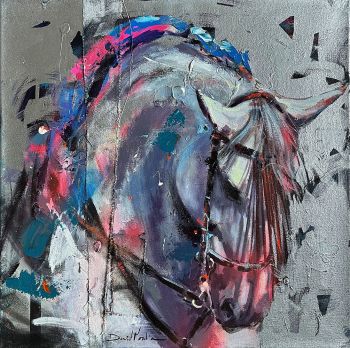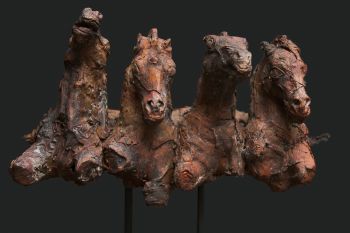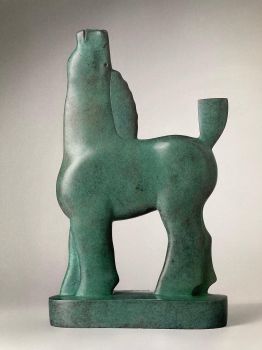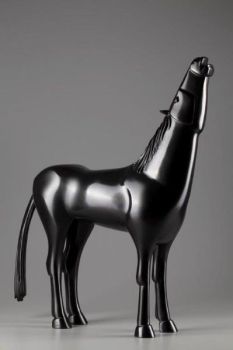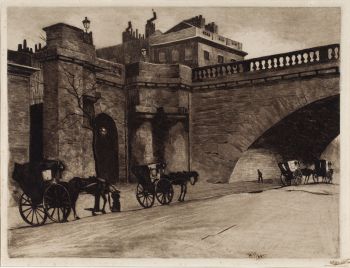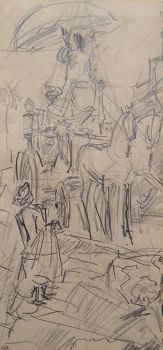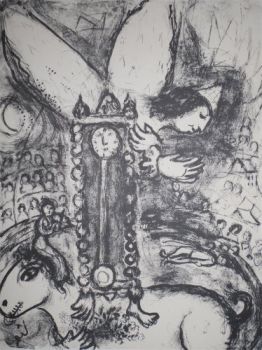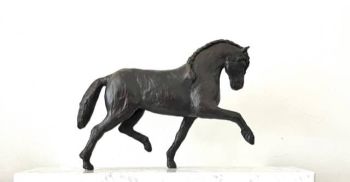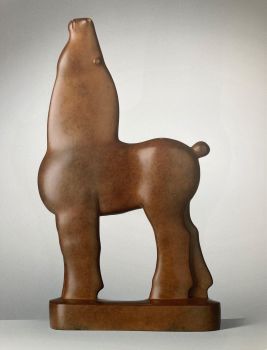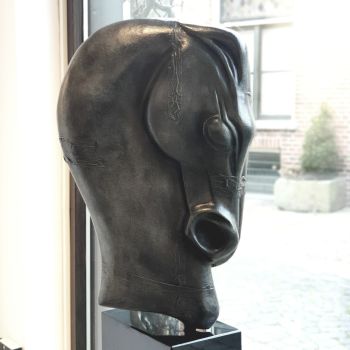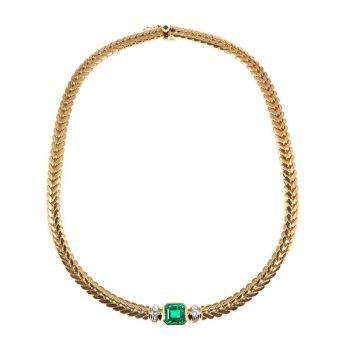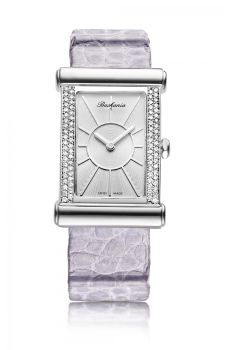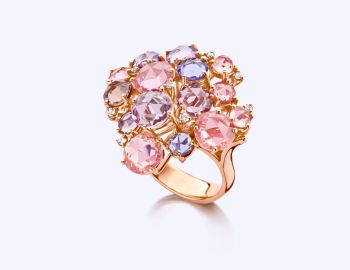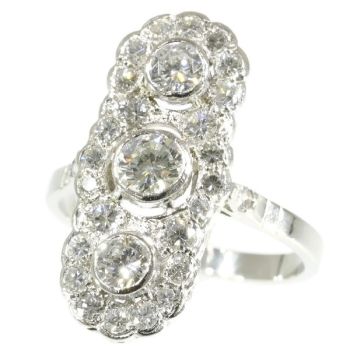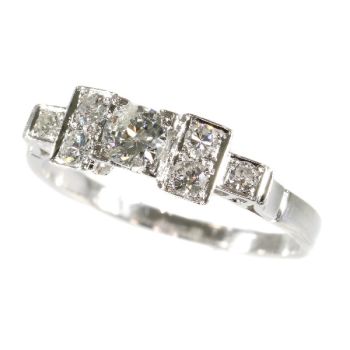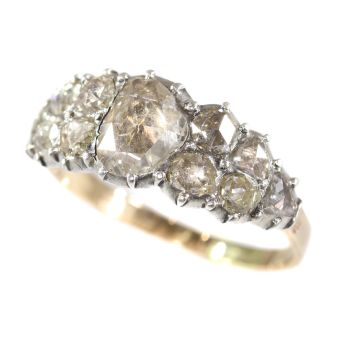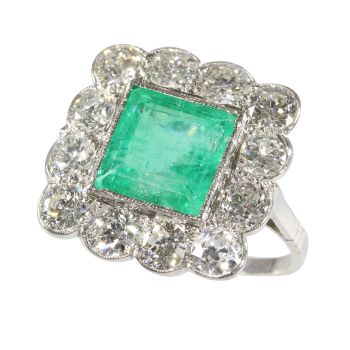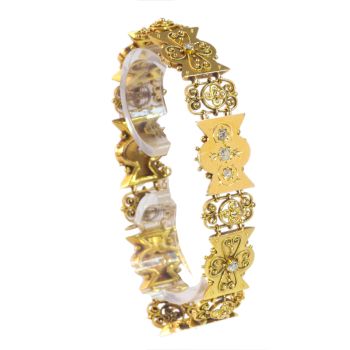Antike Krawattennadel Glückshufeisen mit Diamanten im Rosenschliff und Rubinen 1890
Unbekannter Künstler
Adin Fine Antique Jewellery
- Über Kunstwerk
Antique jewelry object group: tiepin/stickpin
Condition: excellent condition
- (more info on our condition scale)
Country of origin:Although it does not carry any legible control marks we believe this to be of Belgian origin.
Style: Victorian - Victorian decorative arts refers to the style of decorative arts during the Victorian era. The Victorian era is known for its eclectic revival and interpretation of historic styles and the introduction of cross-cultural influences from themiddle east and Asia in furniture, fittings, and Interior decoration. Victorian design is widely viewed as having indulged in a regrettable excess of ornament. The Arts and Crafts movement, the aesthetic movement, Anglo-Japanese style, and Art Nouveaustyle have their beginnings in the late Victorian era.
- See also: Victorianor more info on styles
Period: ca. 1890
- (events and facts in 1890)
Source of inspiration: Good luck tokens
Theme: Horseshoe - There is no consensus among historians as to when and by who horseshoes were first invented. What seems most plausible is that shoeing was invented by numerous armorers in different places at about the same time, and then kept as a militarysecret for a very short time - until the practice was apparently widespread. Fact is that to date they are considered to bring good-luck.
Material: 18k red gold and silver, see also: The silver on gold technique
- (more info on precious metals)
Diamonds:25 rose cut diamonds. We do not have the weight of the diamonds which is normal in our trade when it comes to rose cuts.
Precious stones:23 carre cut rubies (lab produced) (also called verneuil ruby). The fact that these stones are lab produced has no influence on the value of this jewel. Natural rubies and lab produced rubies were both used in this era, rather more for their effect than for their intrinsic value.
- (more info on precious stones)
Birthstones: Diamond is the birthstone (or month stone) for April and ruby for July.
- (more info on birthstones)
Hallmarks: No trace.
- (more info on hallmarks)
Dimensions: horse shoe 1,77 cm (0,70 inch) x 1,78 cm (0,70 inch), total length 8,10 cm (3,19 inch)
Weight: 3,30 gram (2,12 dwt)
Reference Nº: 14350-0146
Copyright photography: Adin, fine antique jewelry
- Über Künstler
Es kann vorkommen, dass ein Künstler oder Hersteller unbekannt ist.
Bei einigen Werken ist nicht zu bestimmen, von wem sie hergestellt wurden, oder sie wurden von (einer Gruppe von) Handwerkern hergestellt. Beispiele sind Statuen aus der Antike, Möbel, Spiegel oder Signaturen, die nicht klar oder lesbar sind, aber auch einige Werke sind überhaupt nicht signiert.
Außerdem finden Sie folgende Beschreibung:
•"Zugeschrieben …." Ihrer Meinung nach wohl zumindest teilweise ein Werk des Künstlers
•„Atelier von ….“ oder „Werkstatt von“ Ihrer Meinung nach eine Arbeit, die im Atelier oder in der Werkstatt des Künstlers, möglicherweise unter seiner Aufsicht, ausgeführt wurde
•„Kreis von ….“ Ihrer Meinung nach ein Werk aus der Zeit des Künstlers, das seinen Einfluss zeigt, eng mit dem Künstler verbunden, aber nicht unbedingt sein Schüler
•"Art von …." oder „Anhänger von ….“ Ihrer Meinung nach eine Arbeit, die im Stil des Künstlers ausgeführt wurde, aber nicht unbedingt von einem Schüler; kann zeitgenössisch oder fast zeitgenössisch sein
•„Art von ….“ Ihrer Meinung nach ein Werk im Stil des Künstlers, aber späteren Datums
•"Nach …." Ihrer Meinung nach eine Kopie (jegliches Datums) eines Werks des Künstlers
• „Unterzeichnet …“, „Datiert …“. oder „Beschriftet“ Ihrer Meinung nach wurde das Werk vom Künstler signiert/datiert/beschriftet. Das Hinzufügen eines Fragezeichens weist auf einen Zweifel hin
• „Mit Unterschrift …“, „Mit Datum …“, „Mit Aufschrift ….“ oder „Trägt Unterschrift/Datum/Beschriftung“ ihrer Meinung nach die Unterschrift/Datum/Beschriftung von jemand anderem als dem Künstler hinzugefügt wurde
Sind Sie daran interessiert, dieses Kunstwerk zu kaufen?
Artwork details
Related artworks
Unbekannter Künstler
EIN JAPANISCHES MODELL EINES NORIMONO, EINES PALANQUINS1650 - 1700
Preis auf AnfrageZebregs & Röell - Fine Art - Antiques
1 - 4 / 12- 1 - 4 / 24
Jean-Claude Champagnat
French 18K gold vintage 1960's bejeweled bird of paradise brooch by Jean-Claude Champagnat1960
€ 12.500Adin Fine Antique Jewellery
 Kuratiert von
Kuratiert vonDanny Bree
Unbekannter Künstler
Enchanting 1870s Vintage Fly Brooch: Victorian Elegance in Gold1870
€ 4.600Adin Fine Antique Jewellery
 Kuratiert von
Kuratiert vonDanny Bree
1 - 4 / 24Willem Witsen
Waiting carriages in front of Waterloo Bridge1850 - 1900
Preis auf AnfrageKunsthandel Pygmalion
1 - 4 / 24Unbekannter Künstler
Frühe Art-Deco-Brosche1920
Preis auf AnfrageAns Hemke-Kuilboer Juwelier & Antiquair
1 - 4 / 24- 1 - 4 / 12















